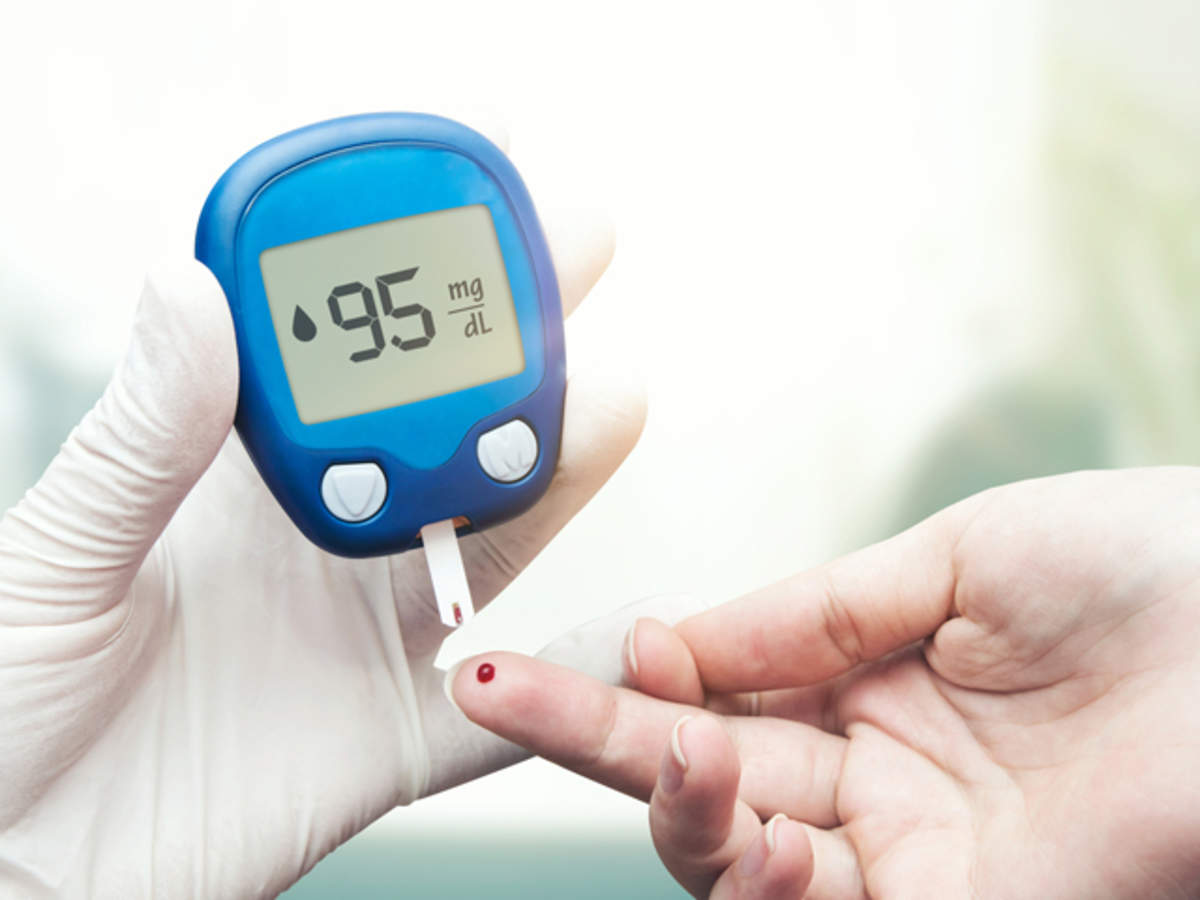Let's Talk About Diabetes - The Silent Killer
Nov 14, 2022
2312 Views
Drinking more water than usual, losing weight even without trying, feeling hungry all the time, having blurry vision, feeling tired with little or no activity, tingling or numbness in the hands or feet, taking washroom breaks quite often, developing dry skin- are you experiencing one or more of these symptoms? If yes, then you should probably check your blood sugar levels because all these symptoms point towards the Silent Killer “Diabetes.”
Diabetes is one of the most common lifestyle diseases with a global prevalence of 9.3% affecting around 463 million people worldwide. It is aptly termed as the silent killer because most people show no symptoms in the beginning or they fail to recognise these early signs. But the reason that diabetes remains a silent killer even in 2022 is due to lack of education.
So, this World Diabetes Day 2022, the International Diabetes Federation has come up with the theme “education to protect tomorrow,” to increase awareness about diabetes. They have launched a global survey to explore the levels of access healthcare professionals and people living with diabetes have to diabetes education.
So let’s talk about Diabetes.
Type 1 and Type 2 are not the only “Types”
Diabetes is a complex disease that has many different forms. Most of us are familiar with Type 1 and Type 2 diabetes. The other types include monogenic diabetes, cystic fibrosis-related diabetes, diabetes caused by rare syndromes, medication-induced diabetes, diabetes caused due to surgery or hormonal imbalances, etc. Many of these types are often misdiagnosed leading to delays in getting the right treatment. That is why it is important to learn the difference between the types.
Here is a list of types of diabetes and their features:
Prediabetes: When the blood sugar levels are higher than normal but not high enough to be considered type 2 diabetes, it is termed prediabetes. However, without proper lifestyle changes, prediabetes may develop into type 2 diabetes.
Type 1 diabetes: Earlier known as juvenile diabetes or insulin-dependent diabetes, it is an autoimmune disorder that usually appears during childhood or adolescence. It is a chronic condition in which the beta cells of the pancreas are damaged thus leading to little or no insulin which leads to higher blood sugar levels. Genetics and exposure to certain viruses are the major cause of Type 1 diabetes.
Type 2 diabetes: Earlier known as adult-onset diabetes, Type 2 is more common in older adults. The pancreas does not produce enough insulin and the cells respond poorly to insulin and take in less sugar leading to elevated sugar levels in the blood. Chronic type 2 diabetes leads to other disorders involving the circulatory, nervous and immune systems. Type 2 diabetes is one of the leading lifestyle diseases. An unhealthy diet, a sedentary lifestyle, high BMI or obesity, elevated stress levels, and excessive alcohol consumption and smoking, are major risk factors that contribute to the development of Type 2 diabetes.
Gestational diabetes: Diabetes diagnosed for the first time during pregnancy is called gestational diabetes. Common causes are excess weight before pregnancy, hormonal imbalances, etc.
The other less common types of diabetes which are mostly caused due to certain disease-causing genes are Maturity onset diabetes of the young (MODY), Neonatal diabetes, Wolfram Syndrome, Alström Syndrome, Latent Autoimmune diabetes in Adults (LADA), etc.
For Type1, Type 2, and Prediabetes, the screening and testing methods are similar. The American Diabetes Association (ADA) recommends that the following people be screened for diabetes:
- Regardless of age, people who have a BMI higher than 25 (23 for Asian Americans) and have additional risk factors such as high blood pressure, non-typical cholesterol levels, an inactive lifestyle, a history of polycystic ovary syndrome or heart disease, and having a close relative with diabetes.
- People above the age of 35 are advised to get an initial blood sugar screening. If blood sugar levels are normal, one can do the screening every three years after that.
- Women with a history of gestational diabetes should be screened for diabetes every three years.
- People diagnosed with prediabetes are to be tested every year.
- Anyone who has HIV is also advised to be tested.
- Anyone who has HIV is also advised to be tested.

The diagnostic testing for these types is also similar that includes Glycated hemoglobin (A1C) test, Random blood sugar test, Fasting blood sugar test, and Oral glucose tolerance test. A GADA antibody test is done for diagnosing LADA and the remaining types are diagnosed by genetic testing for the concerned genes.
But what if you could find out that you may develop Type 2 diabetes even before the symptoms start showing up? Well, this is possible now! A Genetic Predisposition test which is preventive genetic testing will let you know your chances of developing Type 2 diabetes. If you have a risk, you can prevent, manage, or delay the onset of diabetes from occurring by following a healthy lifestyle.
Managing the sugar rush
External intake of the insulin hormone may be required in most of these cases for treatment. But a combination of a few healthy lifestyle changes can help prevent some of these types of diabetes while it can help manage the severity of certain other types. Here are some simple hacks:
- A low-sugar diet: Opt for complex carbohydrates over simple and refined sugars. Include plenty of veggies, fruits (but not over-ripened ones!), and whole grains. Keep track of your sweet tooth and say no to those sugary foods and drinks.
- Tie your shoelaces: Being physically active does not mean you have to hit the gym and lift heavy weights. It‘s great if you do! But, even a low-intensity exercise such as regular walking can do wonders for your body. So ensure to add some form of physical activity to your routine and avoid a sedentary lifestyle.
- Limit alcohol, and quit smoking: Occasional drinking does not pose a major threat to your health. But smoking, even if less frequent, puts your health at risk. So reduce your alcohol intake and quit your smoking habits. Don’t have either of these? Then keep up the good habits!

- Keep away the stress: Stress can stop you from being proactive and can mess with your healthy routine. Whether it is yoga and meditation, or just dancing to your favorite track, listening to music, painting, cooking, travelling, anything that keeps you away from stress, make time for that.
- Extra nutrients: Vitamins B, Vitamin D, Magnesium, and Omega 3 are absolutely essential nutrients for you. Either through diet or as supplements, make sure that these nutrients reach your plate.
- Regular checkups: Whether you are prediabetic, or diabetic, it is always a good practice to monitor your blood sugar levels routinely. Talk with your clinician and figure out which test and treatment work best for you.
- Genetic predisposition test: Test your genes and identify your risk factors. If at risk, be proactive and take the necessary precautions to keep your genetic risk at bay.
MapmyGenome’s comprehensive wellness assessment through its genomic products like Genomepatri and Cardiomap will give an insight into your genetic predisposition to specific health conditions like diabetes and let you personalise a health plan that suits you the best.
The Genomepatri test report explains how genes have multifold implications on your health. Hence, an accurate explanation of the report is essential. To explain the associated health check-up strategies and appropriate lifestyle modifications, a certified genetic counselor comes into play.
Post a genetic counselling session, the report can effectively be used to alter your lifestyle according to your genetic requirement. Your physician, dietitian, or fitness trainer can help you adapt to that lifestyle by outlining further steps.
Diabetes will only become a Silent killer when we remain silent. So choose to be active, choose to be healthy.


